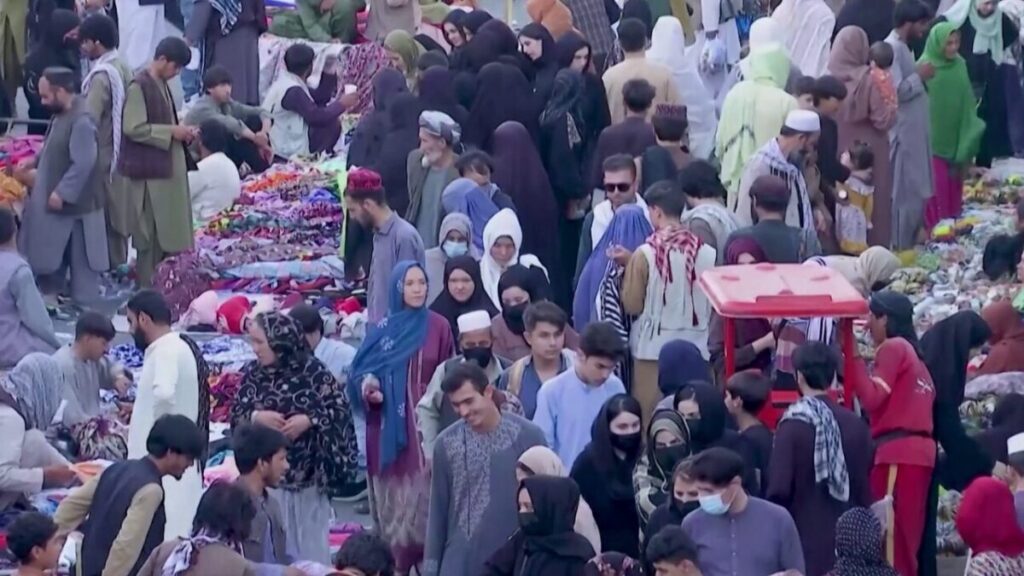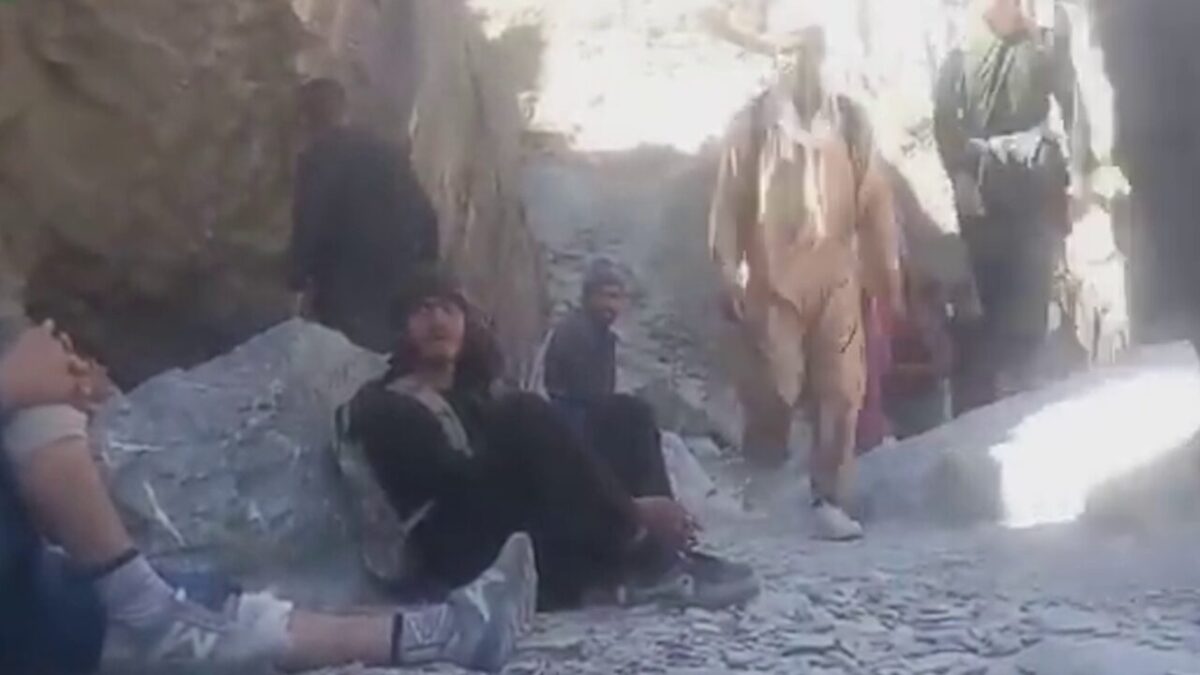KABUL, Afghanistan — Poverty and unemployment remain the leading causes of human trafficking and illegal migration in Afghanistan, according to a field survey conducted by Amu.
The study reveals that until these root causes are addressed, combating trafficking networks and deterring unsafe migration will remain challenging in a country grappling with economic collapse.
The survey, which included responses from 35 individuals across seven provinces—Farah, Jawzjan, Faryab, Parwan, Daikundi, Kunduz, and Bamiyan—sought to capture the personal experiences of Afghans who had engaged in or considered illegal migration. It found that 62.8 percent of respondents believe addressing poverty and unemployment is critical to stopping trafficking and illegal migration.
While the survey focuses on the role of grassroots efforts, it highlights significant gaps in local and civil society initiatives. Nearly 77 percent of participants reported seeing no evidence of civil society organizations or community action against trafficking and migration in their areas. However, the few who had witnessed such efforts shared compelling stories of how local networks helped dissuade individuals from taking dangerous paths.

A patchwork of local interventions
Despite the absence of large-scale campaigns, individual stories illustrate how family, friends, and community members have played a crucial role in preventing illegal migration. These interventions have been instrumental in saving lives and raising awareness about the dangers of human trafficking.
Setara, a mother of three, recounted how her family was preparing to migrate illegally to Iran, selling household items to fund the journey. However, a relative who had previously attempted migration warned her about the risks.
“They shared stories of oppression and mistreatment they faced,” Setara said. “They couldn’t find work and were sent back to Afghanistan. After hearing that, we decided to stay and face our challenges here instead of taking such a risky path.”
Similarly, Zaki, a young man from northern Afghanistan, had planned to travel to Europe via Iran, hoping to escape economic hardship. He made it as far as Herat before his brother’s friends intervened.
“We were about to head to Nimruz when they found out,” Zaki said, referring to the southern province that serves as a hub for smugglers. “My brother’s friends intercepted me at the bus station. They told me to think about my studies and my future. Their advice changed my perspective, and I decided to return home.”
Firsthand accounts of hardship
For those who do embark on these dangerous journeys, the realities are often harsher than expected. Many migrants face exploitation, mistreatment, and dire living conditions, leading some to return home with harrowing accounts that deter others from following in their footsteps.
Ghulam Haidar, who migrated to Iran illegally in 2003, described the abuse he faced while working there.
“The harassment and mistreatment were unbearable,” he said. “Even if I face death, I will not go back to Iran through illegal means.”
Women, who face unique challenges, are particularly vulnerable to exploitation during migration. Hassina, a woman who had previously migrated to Iran, said she was drawn by promises of better job opportunities and affordable living costs. However, her relatives eventually convinced her to stay after reminding her of the hardships she endured.
“Migration offers nothing but suffering,” she said. “Especially for women, the risks are far greater.”
The role of trafficking networks
Human trafficking networks have flourished amid Afghanistan’s economic collapse, preying on the desperation of vulnerable populations. Respondents described how these networks exploit people by promising them a better life abroad, only to subject them to exploitation and abuse.
“Human traffickers know how to manipulate people,” said Saber, a young man who had planned to travel to Iran. “They sell dreams, but the reality is much harsher. Fortunately, my family stopped me after seeing how many people never make it back or suffer terribly on the journey.”
Jawad, another respondent, said traffickers use social media and word-of-mouth to lure migrants. However, he also noted growing efforts on some platforms to counter this narrative.
“We see campaigns urging people to stay and build our own country instead of risking everything abroad,” he said.

Limited civil society efforts
The report highlights the need for greater engagement by civil society organizations in raising awareness and combating trafficking. Some respondents recalled that during Afghanistan’s Republic-era government, certain groups worked to educate the public about the risks of trafficking, forced labor, and illegal migration.
“Back then, there were campaigns on television and social media,” one respondent said. “But now, most of what we hear comes through informal networks or word-of-mouth.”
Others noted that community-based interventions, such as relatives and friends sharing personal stories, have been particularly effective in deterring individuals from illegal migration.
The report also includes stories of those who reconsidered migration after being warned by family or community members.
Saber, who had planned to migrate to Iran to escape economic hardship, changed his mind after his family intervened.
“My parents, uncles, and relatives followed social media and saw how many of our fellow citizens drowned in the waters of Greece or were shot at borders,” Saber said. “They told me it wasn’t worth the risk. That’s why I stayed.”
For others, the trauma of previous migration experiences serves as a lifelong deterrent. Ghulam Haidar, for example, said his experience in Iran taught him that the risks outweigh any potential benefits.
“The suffering I endured there is a lesson I will never forget,” he said. “Even if I’m facing death, I won’t choose that path again.”
While personal interventions have had some success, respondents overwhelmingly stressed the need for systemic solutions. They called for the establishment of grassroots and civil society organizations to tackle the root causes of trafficking and migration, such as poverty and unemployment.
“These organizations need to educate people about the dangers of trafficking and provide alternatives,” one respondent said. “Without addressing the economic crisis, this problem will persist.”
The report also highlighted the importance of creating economic opportunities to reduce the appeal of illegal migration. Respondents suggested that targeted programs for job creation and skills training could help curb the tide of migration.
A continuing challenge
Afghanistan’s deepening economic crisis, exacerbated by international isolation and dwindling aid, remains the central challenge in combating trafficking and illegal migration. Many citizens, unable to find work or meet basic needs, see migration as their only option despite the risks.
The survey underscores that until systemic economic issues are addressed, human trafficking networks will continue to thrive, exploiting the desperation of vulnerable populations and perpetuating a cycle of hardship and exploitation.
As one respondent summarized, “The best way to fight human trafficking isn’t just through awareness campaigns. It’s through giving people a reason to stay.”




